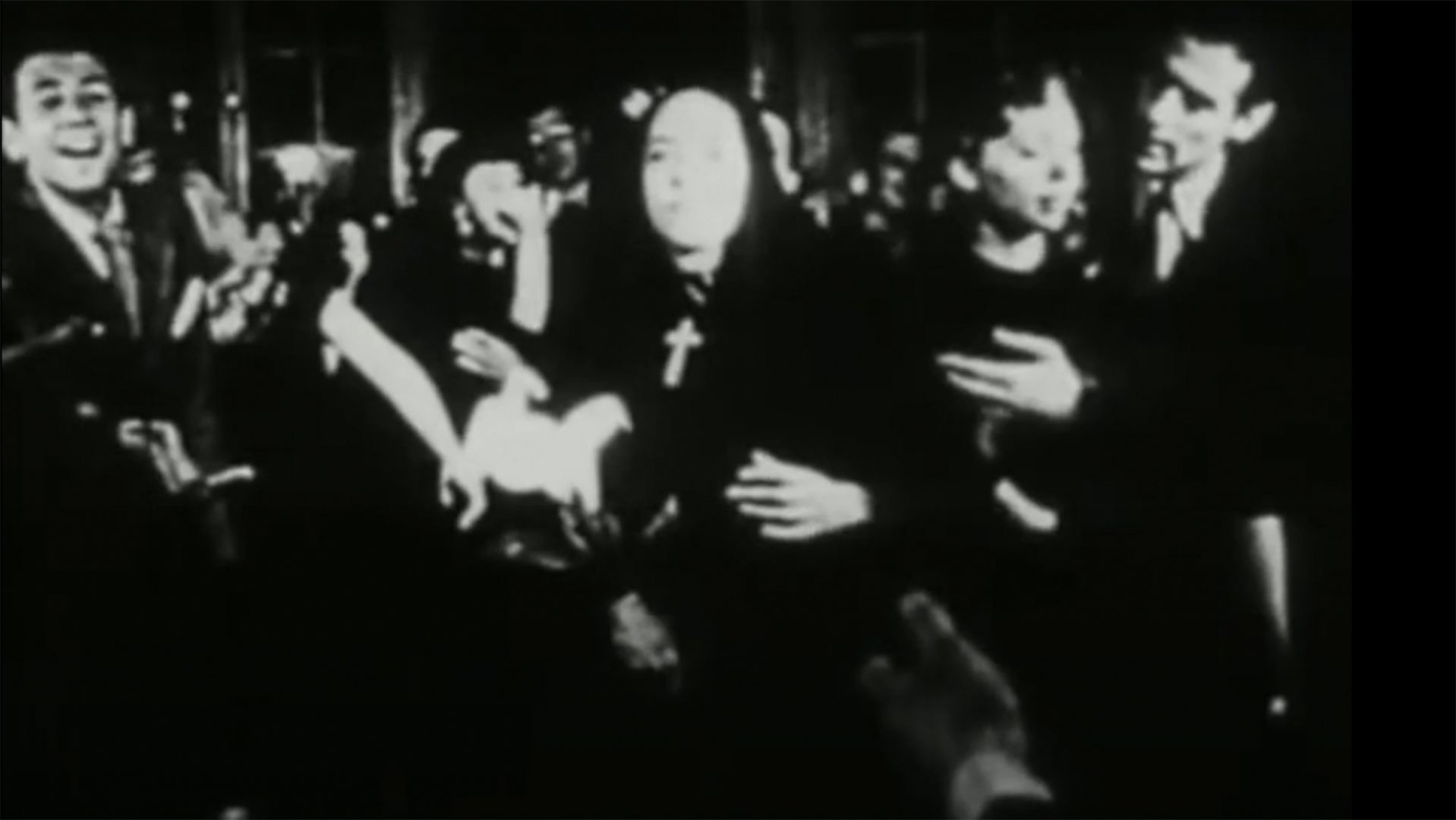
.The Momentum of Gesture in Art and Religion (1)
A nun enters a room where many people meet in lively company. An abundance of gestures can be observed. A variety of hand movements greet and welcome, invite, introduce, offer, refuse, grasp, reject. Those facing each other are separated by gestures, those who are distant are brought together. The participants in this party hustle and bustle, point at something and show something, accompany shoulder shrugs and head swaying with sweeping gestures, underline hearty laughter with waving hands and questioning looks with opening fingers.
The hands reach into the air and grab something out of the air. Thumbs are lifted and fingers point to hands, these prick, support, graze arms and shoulders, grasp other hands, and let go, caress, soothe, open and close. In an invisible stream that gives society a pulsating rhythm, the gestures transfer to the bodies. The society gets going.
The nun enters the room. In a black habit, a large cross on her chest, she carries a bouquet of white zantedeschias in her arms, flowers of the dead. With her other hand she makes a gesture and at the same moment the company freezes. Suddenly all movement freezes.
It is a film scene. Maya Deren made her short film Ritual in transfigured time in 1946. In terms of form and content, the artist’s works repeatedly explore the possibilities of representing manifest dream content. Movement, gestures and dance, rhythm and repetition are worked through on film. And time and again, the content also revolves around the encounter of art with religion and the realities of faith.
A nun and a flower appear in her first film from 1943, Meshes of the afternoon. Both films show how the content of faith is worked through in a representational way. And they show how Maya Deren sublimates in artistic film work what might have led others to church services, or to a monastery, or to mystical contact with Jesus in the Angel Dance. And chess, which appears again and again in Deren’s films, brings into play with its moves those “moves” that make the pieces in At land (1944) move on their own.
It is interesting to follow the nun in Maya Deren’s film Ritual in transfigured time through the evening party, in which alternating and merging gestures of a non-committal party ritual increasingly turn into a round dance of couples revolving around each other. A young woman experiences the dreamlike transformation and trabsfiguration from a nun into a dancer through this ballroom dance, but in the end she has to realise that profane expressive dance can also become rigid in the gesture of artistic and choreographic conventions.
The film thus depicts the suffering of ritualised gestures – and at the same time the possibility of their passionate liquefaction in dance. And it shows that habitus, the conventions embodied in gestures, does not only come into play in religious rituals. However, Maya Deren’s films also show how the content of faith is artistically dissolved, literally analysed. Moments of faith are made visible in a different way than faith itself does. The inner time perception of faith, which seeks eternity in every moment, is confronted with the cinematic perception of the momentum in which past, present and future are vanishing, saved and lifted to another level same time (aufgehoben). It is the slow motion of the film that makes the momentum visible.
It is highly interesting that Maya Deren sees in the momentum of the film a feminine time, a fulfilled time that makes the entrance of something future foreseeable – like a pending birth, like a new origin. Religions also know something like this, namely with regard to the question of how the Messiah comes into the world – and what distinguishes messianic time from measurably uniform time.
The slow motion of the film, flowing towards the still, makes the pulsation of the event perceptible, says Maya Deren. This reveals a feminine, female experience of rhythm, of becoming in the process – as in dance.
Dancers know the difficulty that men have with not just getting the time of a dance over with, not being time-lapsers, not hurrying, rushing, not being ahead of time, too fast. “Take your time …”. Whoever accepts the invitation of the gesture of the hand that rests on the arm and shoulder to lead to be led, is given the momentum of a dance. For what is the momentum in film is the dance in movement through time.
But what happens when dance is made part of a religious ritual by believers, for example in the liturgy of the service of the Catholic Church?
Robert Krokowski